The following article was published in the June issue of AirAsia Travel 3Sixty (PDF). Famous novelist and traveler Robert Louis Stevenson once wrote, “There are no foreign lands. It is the traveler who is foreign.” I share the sentiment. It has always been my philosophy whenever I travel. And Indonesia, albeit being the country I’ve visited the most, was still somewhat distant to me. Despite the great memories, I’ve always had an inkling that there were still more to be learned about our neighbor across the strait. Jakarta was too crowded. My time there was busy spent cheating death-by-traffic-jam. Bali was amazing. But the commercialization of the island made Langkawi look like a virgin. And Bandung would’ve been nice, had it not been for the invasion of bargain-hunting Malaysians hunting for bargains to make up for the money they’d spent flying there. So Jogjakarta seemed to be the perfect fit. I’ve never been there. The place appeared to be low-profile, yet mysterious enough. It was probably the chance for me to actually experience their culture and immerse myself in its richness and diversity. Plus AirAsia was blowing tickets for 200 bucks a pop, return.   Just like any other cheap tickets go, it was a red eye flight out of KL to the Adisucipto International Airport. Jogja was just stretching out of bed when we arrived at the ViaVia Guesthouse, our abode for the next four days. We were warmly greeted by their friendly staff, who offered us some es teh (iced tea) while waiting for our room to get cleaned. Unlike by-the-book disciplinarian It was no surprise. One of the reasons we chose the place was because of the positive reviews they were getting. Hidden amidst the barrage of self-proclaimed ‘boutique’ havens with deceiving photos and planted reviews on TripAdvisor.com, ViaVia claimed to be no more than a practical lodging built to help the locals. As an extension of their restaurant and fair trade shop just down the street, the guesthouse was established by its Belgian owners as a mean of giving back to the community. You simply gotta chip in for the good guys. The other reason was of course our wallet. While we may have splashed out a bit on previous trips, we wanted this particular trip to be of minimum cost and on a shoestring. We wanted to spend like the locals do. Nevertheless, as we walked into our room overlooking their quaint bamboo garden, we knew there was simply no chance of getting a room like that for USD 20 a night anywhere else in the world. It was basic, clean, stylish, and there wasn’t a mini-bar filled with overpriced beverages within sight.  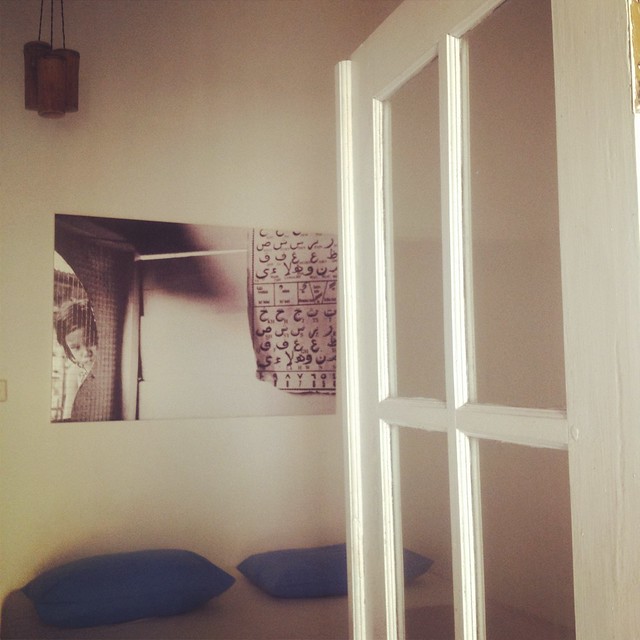 It was pouring before we could step back outside. The dark clouds that have been hovering us back home made their way there as well. It was, after all, still the monsoon season. So I spent the time we had reading through the write-ups on Jogja from Wikitravel that I had illegally printed out at work. To my pleasant surprise, there were beaten-up copies of Lonely Planet Indonesia lying around at the lounge -- probably handed down from one backpacker to another, together with their odor. Then plan was to spend four days in Yogyakarta. A day out in downtown Jogja, a day out in Borobudur and Merapi, a day out in Prambanan, and another whole day to wait for Azalia to pack her bags. I scoured through the pages to figure out our route for the city walk. Noting that the maps were mostly not to scale, we walked out into the streets of Yogyakarta with the trusty USD 29.99 Lonely Planet guide in hand and the cool after-rain breeze as we hit our stride -- not too long before it was halted.   Among the many charms of the city, becak drivers are not to be missed; even if you’d like to miss it. Becak, if you haven’t figured out yet, are trishaws akin to the beca that we have in Malaysia. As one of the main modes of transportation around Jogja, the becak is seen everywhere with its drivers nonchalantly trudging through busy traffic and narrow streets like, as you kids like to say these days, ‘a boss’. When they’re not busy paddling, becak drivers are often seen either a) snoozing on their rides or b) right beside you. Becak drivers are known for their persistence in offering service. One of them actually followed us all the way to the end of the street asking if we’d like a ride. At one point, I thought he’d follow us all the way through the 5km we had planned on walking. To be fair though, everybody needs to make a living. So the right to do is probably politely decline and smile. Try not to put on a smug face and brush them off. Nevertheless, some of them do intend on taking you to unscrupulous batik shops for a quick commission. Try to act like a local so these guys won’t come near you. The hours I’ve spent watching Indonesian sinetron finally paid off. 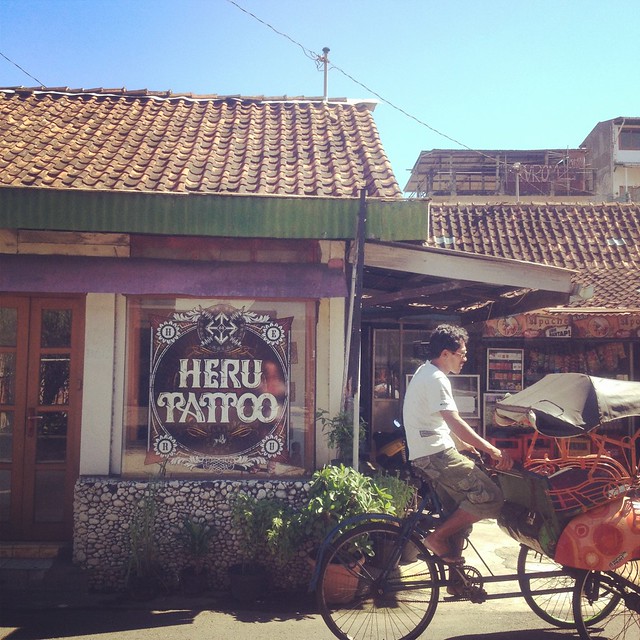  The route we planned on taking would take us from Prawirotaman, the backpackers village we were staying at, to Malioboro, the heart of the city. The course was along the busy streets of Jogja, which were probably designed only for pedestrians with balls of steel. Yet the locals seemed unperturbed, crossing the roads as they wished to the honking motorists. To its credit, the traffic in Jogja is miles better than the one in Jakarta. And the accident rate there is merely a speck of the figures that we have in Malaysia. Dealing with traffic anywhere in Indonesia nonetheless remains a death-defying act for me. Through Alun-alun (the royal ground), our first stop was Kraton, the palace of the Sultan of Yogyakarta. As one of the special districts, Jogja is led by a Sultan who is also the appointed Governor of the province. It’s a system that is rather unique as compared to the other districts in the country. You can google it up as that’s about as much as I know. Adjacent to Kraton is Taman Sari, the 'water castle'. The complex is said to be the pleasure garden of the first Sultan. And by pleasure I don’t mean water slides. 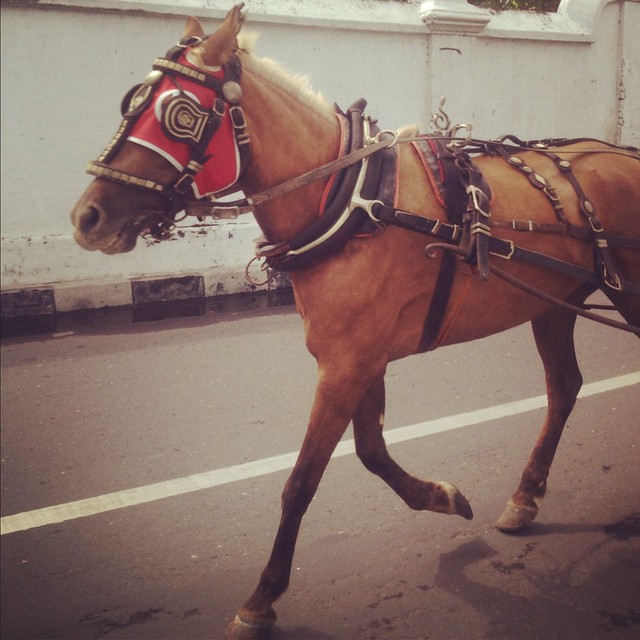  As we passed Museum Kareta Kraton and Benten Vredeburg toward Malioboro, the crowd began to gather momentum. We were edging closer to the pulse of Jogja, the city that has endured tectonic movements and the wrath of the Merapi. The traffic began to build up as throngs of people swarmed the carnival at Pasar Beringharjo. Rows of hawkers lined up their stalls by the street, filling the air with calls for attention to their offerings. It was pandemonium. I could feel the commotion and I saw the astonishment in Azalia’s eyes. For someone who could barely survive our neighborhood Pasar Tani, diving into Jogja’s heartbeat was pure mayhem. Malioboro stretches 2km from the monument to the palace. It was Saturday afternoon and the city was alive. The colors and sounds of Jogja were peaking and the locals were loving it. Street musicians or pengamen jalanan filled the air with a bravado that Akademi Fantasia graduates could only dream of matching. Students from the many universities around Jogja were out and about; vibrant and energetic. Housewives, furiously bargaining with sellers as their husbands wait in vain. The scene reminded me of our Jalan Tunku Abdul Rahman on weekends, with more Indonesians. One thing that really caught our attention along Malioboro was the calung street performers. The bands usually consist of five to six members with the angklung being the main instrument. I’m not all that unfamiliar with the angklung as some of the masters of the instrument are from Malaysia. But instead of covering My Heart Will Go On, the calung bands of Malioboro belted out groovy renditions of their traditional songs. This, coupled with the locals dancing to it out of nowhere was one infectious vibe. You can look it up on YouTube but it’s nothing like being there. Don’t be surprised if you’re suddenly doing the Macarena in front of the PC. 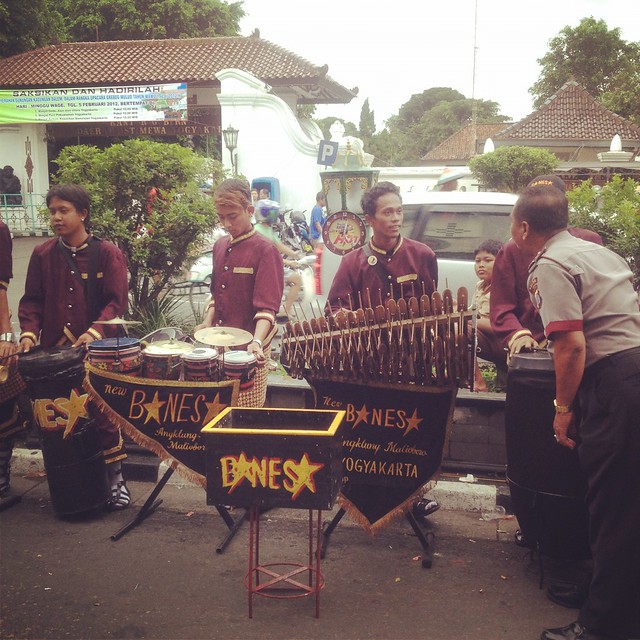 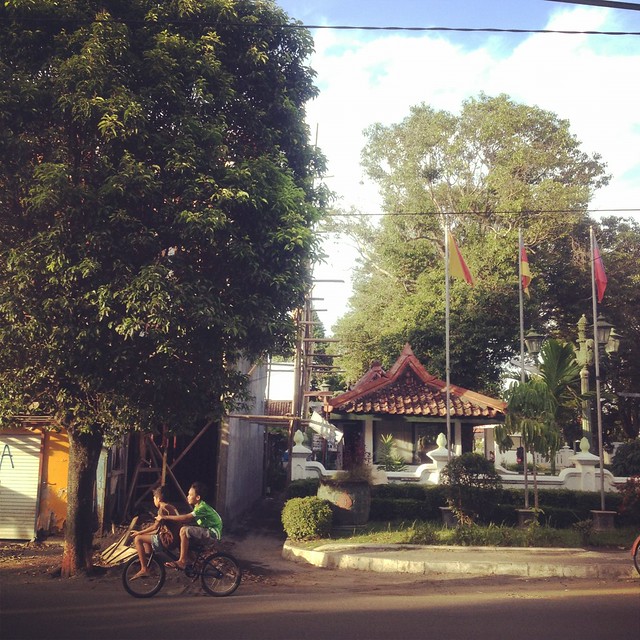 Among others, Jogja is famous for its arts, both traditional and modern. Our walks were never dull thanks to the superfluous amount of street art filling every bit of empty space on the building walls. You could spend a whole day on the streets and still not capture them all. Whether intentionally or not, there appeared to be no governance against graffiti in Jogja and it’s serving the city well. The humor and candor in the artworks are representative of its people. Always warm and friendly within the sense honesty ingrained in them. The evolution of the arts in Jogja may have rooted back centuries to the building of Borobudur and Prambanan. Storytelling was done on walls back then so the existing graffiti scene is, in a way, akin to that concept. The difference is probably in the messages portrayed as politics and activism seem to be the stories embodied these days. 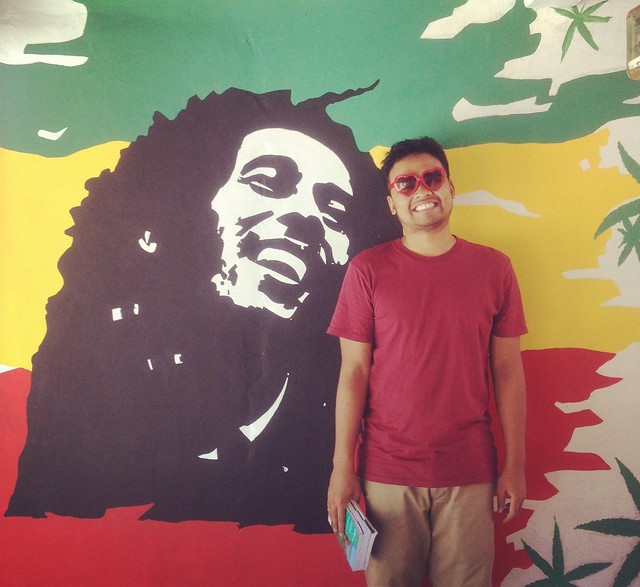 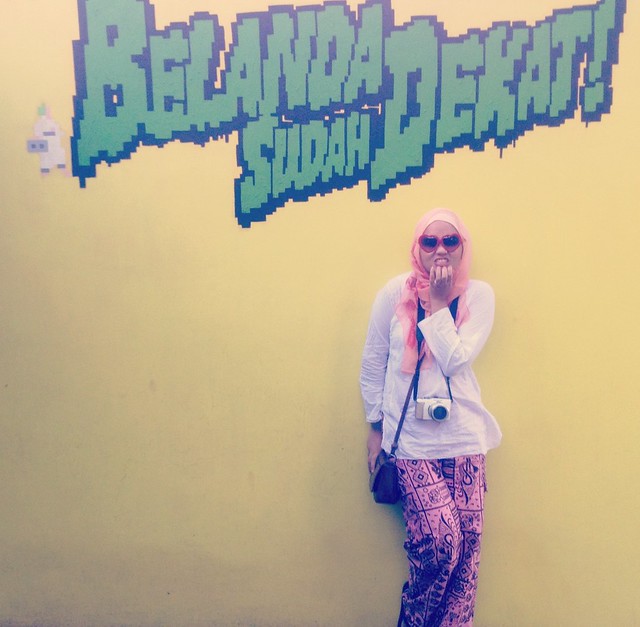 We spent our second day in Jogja visiting the buildings that house the city’s contemporary art movement. It was a coming of age thing for me personally. I used to loathe the idea of going to galleries and museums when traveling. The activity lacks dynamic and it’s nothing you can’t view or read on the Internet. Time is a luxury when you’re abroad so why spend it analyzing an artwork when you can go mental on the rides at the theme park? Those days have since faded into oblivion. I have grown to appreciate the purpose of art joints and their cohorts. Even though I have no idea what they’re about 90% of the time, art pieces, in any form, remains an expression of the people. And these feelings are usually influenced by the environment they’re in, their home, the place I’m visiting. If you’re ever in Jogja, swing by Kedai Kebun Forum (KKF) on Jl. Tirtodipuran for a copy of the Yogyakarta Contemporary Art Map. Most of the galleries are nearby KKF and very accessible; Langgeng Art Foundation and Cemeti Art house to name a few. They are not to be missed if you’re into artworks and installations you’ll never understand.   Our penultimate day in Jogja was probably the highlight of our stay. We were due to visit two UNESCO World Heritage Sites and the remains of the volcanic eruption that rocked Indonesia, and the world, just over a year ago. Borobudur is a Buddhist stupa and temple complex about an hour drive north of Jogja. Thought to be completed in 825 AD (around the same year Madonna was born), Borobudur is regarded as one of the greatest ancient monuments in the world. I was indeed in awe of the size and attention to detail given to the construction of the building. The meticulous carvings on the walls recount the life story of the Buddha and his teachings. Being more than 1,000 years in existence though, parts of the reliefs have worn off through time. You’re better off hiring a guide than trying to understand the story on your own. I gave up after panel number 2 of the 2,760 there.   An hour away from Borobudur, is Prambanan, a large ancient temple complex made UNESCO World Heritage Site #642 in 1991. The candi buildings around the complex are a mixture of Hindu and Buddhist temples. Some parts of the complex though, were ruined in the wake of the 2006 Yogyakarta earthquake. Restoration works are still on-going and some areas are closed to the public. Being there on a weekday, we had the pleasure of walking around the gardens and enjoy the majestic view without the invasion of large tour groups wearing the same t-shirts alongside their unrelenting guides. The sun was bright and the blue skies made it a perfect day out for photography. Which also gave the touts with cameras there a good excuse to offer their service. A simple ‘thank you’ would usually do the job. Asking for help to take a picture of you with your camera on the other hand, is not advised.  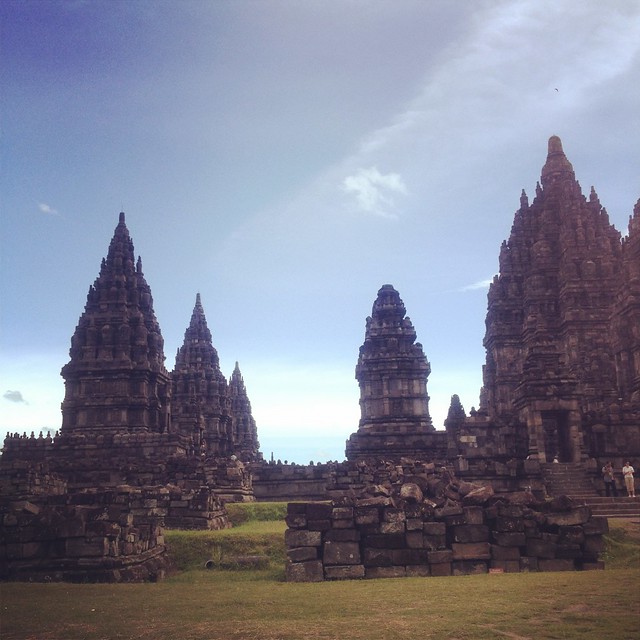 It felt good to be able to strike off two UNESCO sites in one day. Our next stop though, was one that we wish we’d never have to make. 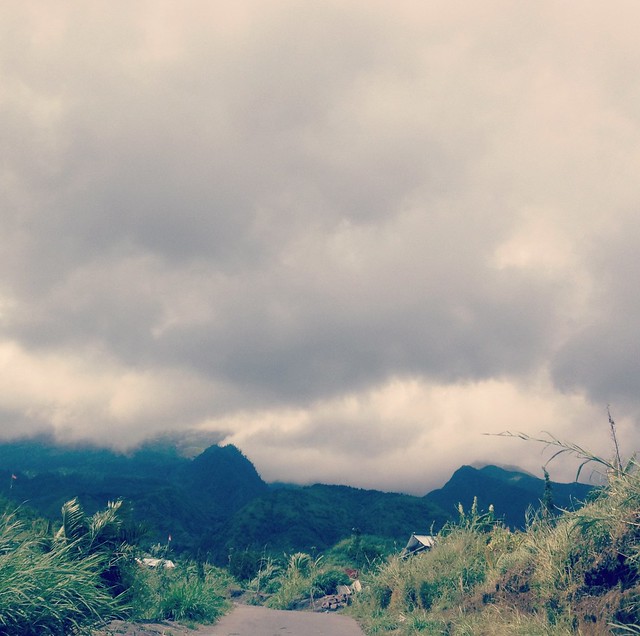  It was a chaotic late October afternoon on the foothills of Mount Merapi. The Indonesian government had raised the alert for an eruption to its highest level and issued a warning to villagers. The 19,000 people living within 10km of the zone were told to evacuate the area. In total, 353,000 people were eventually evacuated from the affected area. At 202pm local time Monday, 25 October 2010, the first of a string of eruptions spewed lava out of Merapi down to its southern slopes. Throughout November, the mountain continued to erupt until the official alert status was reduced as it subsided in early December. Throughout the painful weeks, 353 deaths were recorded as a result of eruptions said to be the largest since the 1870s. The eyes of the world were on Merapi.   The solemn grief surrounding Ground Zero was still there when we reached the area. What was left of the destroyed village remained as memories of those who have left. Shattered windows and collapsed walls, some with wooden doors still attached to them, told stories of the past. Of what was once, a thriving village. Our hike up toward Mount Merapi was a spectacle to behold with its peak scraping into the clouds, still breathing out smoke. The sights of tragedy surrounding us however, were simply devastating. Restoration works are on-going on some parts of the village and memorials are built around the area as those who have gone, are never forgotten. The government is putting effort to rejuvenate and turn the area green again. And incoming support is continuing in lifting the spirit of the village folks. Being there was a priceless experience and valuable reminder. Our thoughts to everyone affected.  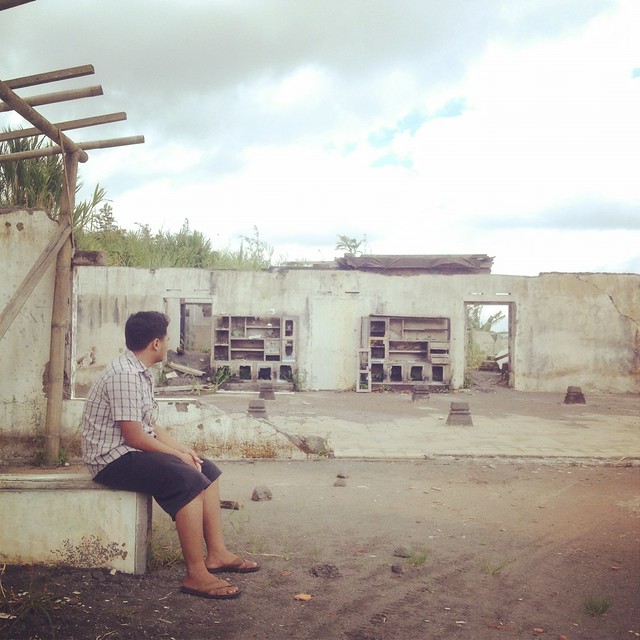 Just as any of our trips elsewhere, it wouldn’t be complete without sampling the local delicacies. The staple of Jogja cuisines would probably be gudeg (good-urk). After numerous confusion and much-needed correction, as I kept on asking people where the best gundik is, we finally made our way to a gudeg joint on Jl. Dagen. Served with chicken and telur pindang (brown egg) over white rice, gudeg is a sweet pasty curry-like dish made from jackfruit. Its sweetness may not go directly well with our appetite for spicy dishes. But it does grow on you after a while. There was then the usual rounds of gado-gado, cap cay, oseng-oseng and of course nasi padang that I’d rarely miss on my trips to Indonesia. From the gourmet meals at ViaVia Restaurant to the student-priced Nasi Padang Murah Meriah nearby our lodging, every bite was a joy without our budget getting hurt. Not to mention various es-es we had the pleasure of sipping. Truth be told, while most of the dish names may sound exotic to Malaysians, the majority of them are similar to what we have at home. 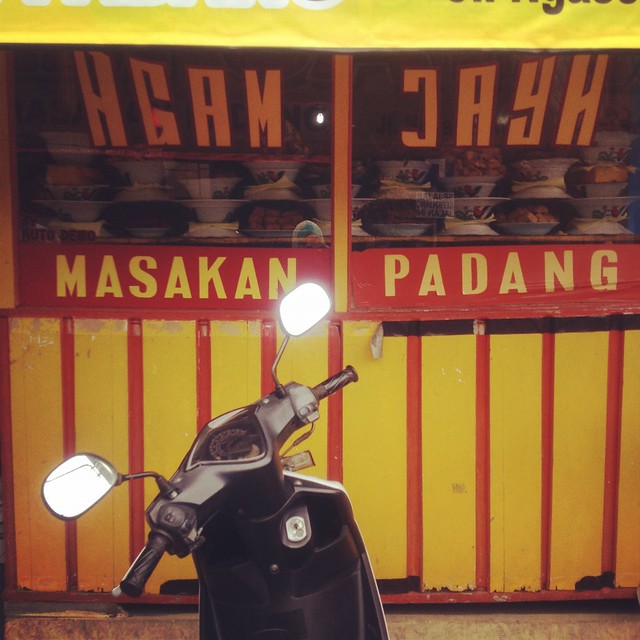 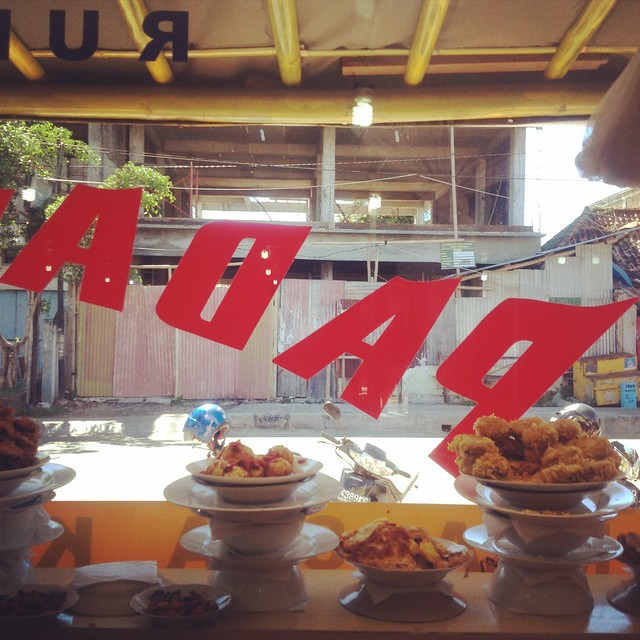 When we first flew into Jogja, the idea was to experience the soul of Indonesia. While Jakarta remains the capital of the region’s biggest country, our stay in Jogja had taught us that the roots are probably stronger there. The country’s culture, traditions, history, people, music, food and art appeared to be more accessible (many thanks to the relatively bearable traffic). And there’s always a helping hand wherever you go. If I’m only allowed to go to Indonesia only once in my lifetime, I would choose Jogja. It doesn’t boast the beautiful beaches of Bali nor does it promise the ultimate shopping experience of Bandung. Jogja simply stays as it is and welcomes visitors whenever they feel like it. The city is all about the preservation of its heritage and culture, without putting a halt to any new wave movements. The becak drivers who followed us everywhere will continue doing it and rightfully so as they define Jogja and what the city is all about. In fact, I think one of them had just followed me on Twitter. 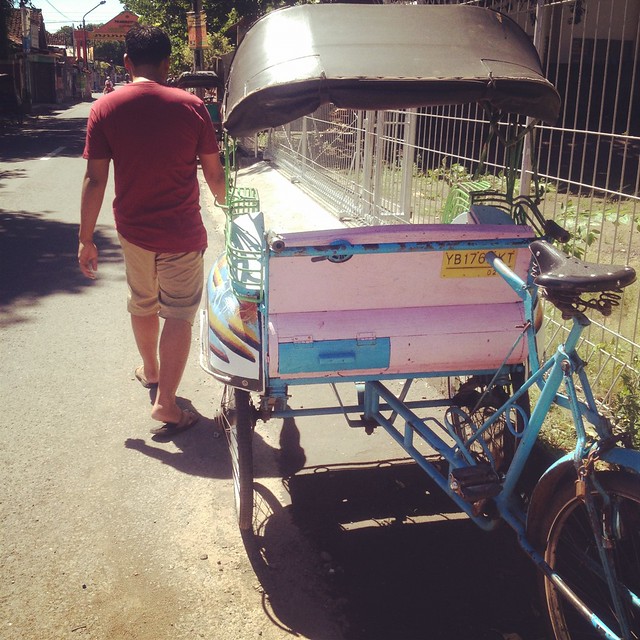  More photos by Azalia Suhaimi here.
Comments:
Nicely written! Thank you for such a nice, concise yet descriptive account of your trip. I'm off there this weekend... I won't be able to cover as much ground with a baby in tow but we're looking forward to our trip.
Hi Sone, Thanks for the kind words. Jogja is full of colors, energy and shiny happy people. I like the art movement going on there and how they fuse ancient and modern art. Great heritage preservation too. Definitely a joy to be there. Have fun!
You look enjoy your trip to Jogja. How was there? the community? the weather? the places? Gonna be there soon! XD
I'll be there with Rental Mobil Jogja Semberani wanna be there one more? haha Subscribe to Post Comments [Atom] |

About Busking Barefoot is the travel blog of Asrif Yusoff and Azalia Suhaimi. Here's what happened. Places Bon Ton Kota Kinabalu Krabi Maldives Siem Reap Similajau Simply Mel's Yogyakarta Tanjong Jara Western Australia Western Australia (Video) 
This work is licensed under a Creative Commons Attribution-Noncommercial-No Derivative Works 2.5 Malaysia License. |


Post a Comment